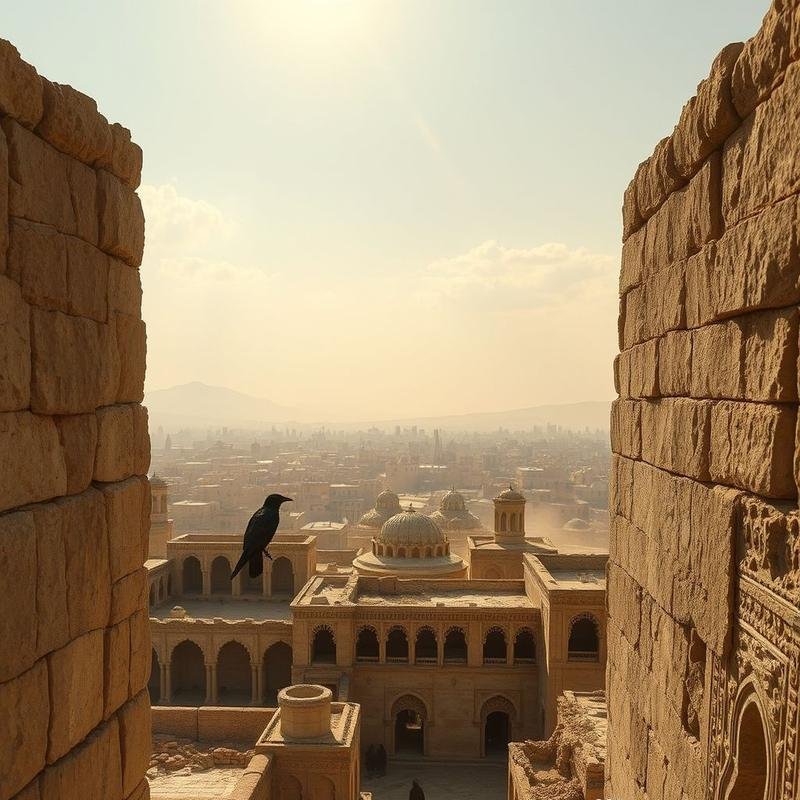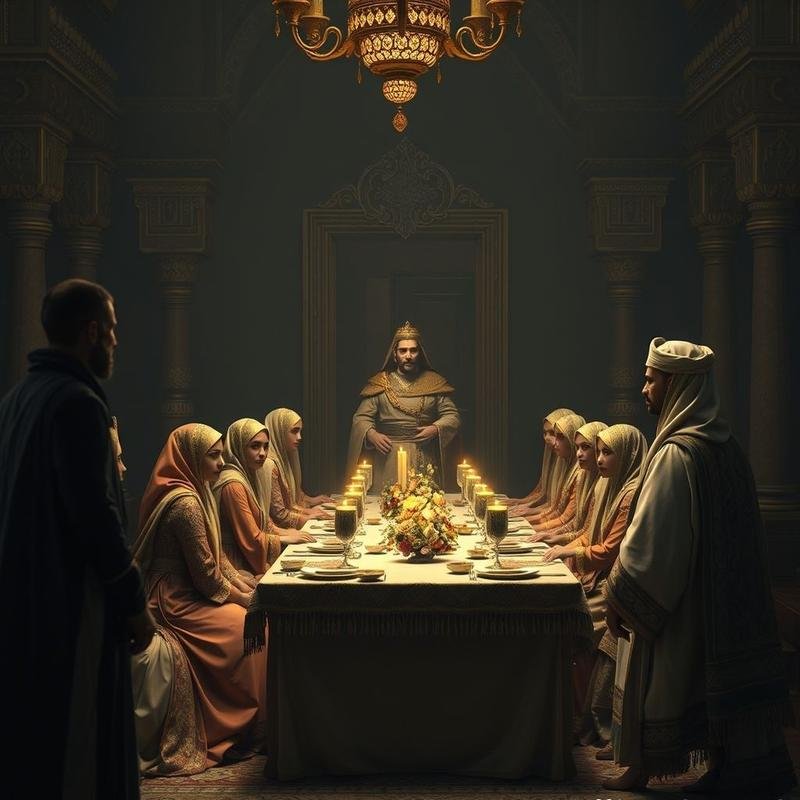The Abbasid Massacre: A Bloody Reconciliation – What Was Concealed?

The Abbasid Massacre: A Bloody Reconciliation – Unveiling the Hidden Truths.
In 750 AD, the Umayyad Caliphate, which had endured for nearly a century, met its demise. Following years of conflict, the Abbasids, under the leadership of Abu al-Abbas al-Saffah, successfully overthrew the Umayyad regime. The Abbasids, descendants of the Prophet Muhammad’s uncle, asserted their claim as the rightful heirs to the Caliphate, alleging that the Umayyads had unjustly seized power. However, the seizure of power marked not the culmination, but rather the commencement of a new period characterized by bloodshed and retribution.
In the aftermath of his victory, Abu al-Abbas sought to consolidate his authority and eliminate any potential threat posed by the Umayyads. He recognized that the presence of Umayyad princes, even those ostensibly peaceful, represented a risk to the stability of the nascent Abbasid state. Consequently, he orchestrated a treacherous banquet. He extended invitations to prominent Umayyad princes, ostensibly for the purpose of fostering reconciliation and unity, but in reality, the feast was a meticulously devised trap.
Historical accounts depict the banquet as an elaborate act of deception. Ibn al-Athir, in his “Al-Kamil fi al-Tarikh” (The Complete History), recounts that Abu al-Abbas al-Saffah issued letters of safe conduct to the Umayyad princes, guaranteeing amnesty and forgiveness, and invited them to a banquet in Abu Futrus, Palestine. The Umayyad princes, trusting in the promise of safety and peace, accepted the invitation, unaware of the impending peril.
Upon arrival at the banquet, the Umayyad princes were met by Abbasid soldiers and forces loyal to Abu Muslim al-Khurasani, the Abbasid military leader instrumental in the Umayyad overthrow. As the Umayyad princes commenced their meal, secure in their presumed safety, the Abbasid soldiers launched a sudden and brutal attack. Some accounts suggest that Abu al-Abbas al-Saffah ordered the Umayyad princes to be executed upon the dining tables, while others indicate that the killings occurred after the feast. Regardless of the precise sequence of events, the outcome was a horrific massacre in which dozens of Umayyad princes perished. Estimates of the death toll range from seventy princes to even higher figures.
Only a small number survived the carnage. Some managed to escape to Andalusia, where they established a new Umayyad state. Abu Muslim al-Khurasani, the military leader who played a critical role in the Abbasid ascent to power, was central to the massacre. Historians portray him as a ruthless figure, devoid of compassion, and directly responsible for executing Abu al-Abbas al-Saffah’s orders to eliminate the Umayyads. Whether Abu Muslim was solely motivated by obedience remains a point of contention. Some historians posit that he was driven by personal ambition and sought to eliminate any potential challenge to his own authority.
The underlying motivations for the massacre remain a subject of scholarly debate. Some argue that it was a political imperative to solidify Abbasid rule and neutralize any Umayyad threat. Others view it as a barbaric and unjustified act, reflecting the Abbasids’ desire for vengeance against the Umayyads for perceived injustices against the Prophet’s family.
Regardless of the motivations, the massacre cast a dark shadow on the history of the Abbasid Caliphate. It cemented the Abbasids’ image as cruel and merciless rulers, igniting widespread anger and resentment among Muslims. It also exacerbated the divide between the Umayyads and the Abbasids, perpetuating conflict and instability within the Islamic world.
The massacre also raised questions regarding the legitimacy of the Abbasid Caliphate. How could a regime founded on bloodshed and treachery be considered legitimate? Some historians contend that the Abbasids were unqualified for the Caliphate and that they seized power through deceit and violence. Others argue that the Abbasids were the rightful successors and that they purged the state of the injustice and corruption that had plagued it under Umayyad rule.
Historical sources offer divergent accounts of the massacre. Some Abbasid sources attempt to justify the event, portraying it as a necessary measure to safeguard the state, while Umayyad sources condemn it as an unpardonable atrocity. Neutral sources attempt to provide an objective assessment, but are often influenced by prevailing narratives.
Key figures in this historical episode include Abu al-Abbas al-Saffah, the first Abbasid Caliph, who ordered the massacre; Abu Muslim al-Khurasani, the Abbasid military leader who carried it out; Abdullah ibn Ali, the uncle of Abu al-Abbas al-Saffah, who played a significant role in the Umayyad overthrow; and Marwan ibn Muhammad, the last Umayyad Caliph, who was killed in the Battle of the Zab.
Significant locations include Abu Futrus in Palestine, the site of the massacre; Damascus, the capital of the Umayyad Caliphate, which fell to the Abbasids; Kufa, the initial capital of the Abbasid Caliphate; and Andalusia, where the surviving Umayyads fled and established a new state.
Myths and folklore have also become associated with the massacre. Some legends claim that the blood of the slain Umayyads transformed into a river, and that the site of the massacre became cursed. Other tales suggest that the spirits of the murdered Umayyads continue to haunt the location, seeking vengeance on those who approach.
The massacre had a profound impact on Islamic culture. It inspired numerous poems and verses condemning the event and depicting its horrors. It also influenced art, literature, and historical narratives, becoming a symbol of injustice and cruelty.
The massacre remains a tragic event in Islamic history, raising fundamental questions about power, justice, and retribution. Were the Abbasids justified in executing the Umayyads? Was the massacre necessary to consolidate their rule? And can violence ever be justified in the pursuit of political objectives? These questions continue to resonate today, and definitive answers remain elusive.
Alternative accounts of the massacre exist, differing in details and interpretations. Some attempt to absolve the Abbasids of responsibility, attributing blame to Abu Muslim al-Khurasani or other military commanders. Others exaggerate the brutality of the massacre, portraying the Abbasids as bloodthirsty figures.
Among these accounts, that of the historian al-Ya’qubi stands out, who describes the massacre as a justified act of revenge, arguing that the Umayyads deserved their fate due to their injustice and corruption. Conversely, the historian al-Mas’udi characterizes the massacre as an unforgivable atrocity, asserting that the Abbasids committed a grave error in killing the Umayyads.
Popular accounts passed down through generations also offer varying perspectives. Some portray the massacre as a gruesome horror story, emphasizing graphic details of killing and torture. Others depict it as a heroic narrative, highlighting the resistance of certain Umayyads who fought to the death.
The role of women in these events warrants further examination. While historical sources provide limited information on the involvement of women in the massacre, it is evident that Umayyad women suffered greatly as a result. They lost their husbands, sons, and brothers, becoming widows and orphans.
Some accounts mention Umayyad women who played a role in resisting the Abbasids. Among them is Umm Musa bint Mansur al-Himyari, the wife of Marwan ibn Muhammad, who led a fierce resistance against the Abbasids in Egypt. Also noteworthy is Fatima bint Abd al-Malik ibn Marwan, the wife of Caliph Umar ibn Abd al-Aziz, known for her piety and asceticism, who attempted to mediate between the Abbasids and the Umayyads.
The massacre also impacted relations between different Arab tribes, exacerbating divisions between those loyal to the Umayyads and those aligned with the Abbasids. Some Umayyad tribes, such as the Kalb tribe, faced persecution and abuse under Abbasid rule, while Abbasid tribes, such as the Bani Hashim tribe, received support and patronage from the state.
Some accounts suggest that certain Arab tribes sought revenge against the Abbasids for their actions against the Umayyads. These include the Bani Shayban tribe, which led a revolt against the Abbasids in the Jazira region, and the Bani Tamim tribe, which attempted to assassinate Caliph Abu Jaafar al-Mansur.
The massacre remains a historical enigma that raises enduring questions. Were the Abbasids fully aware of the extent of the massacre’s brutality? Could they have prevented it? And can the massacre be considered a war crime? These questions continue to be debated, and definitive answers remain elusive.








